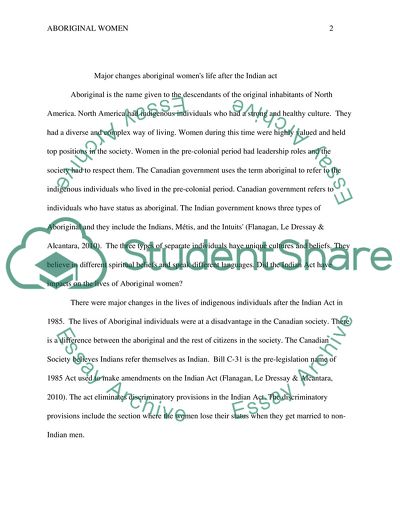Cite this document
(Major Changes Aboriginal Women's Life after the Indian Act Report Example | Topics and Well Written Essays - 1500 words, n.d.)
Major Changes Aboriginal Women's Life after the Indian Act Report Example | Topics and Well Written Essays - 1500 words. https://studentshare.org/history/1852519-major-changes-in-aboriginal-womens-life-after-the-indian-act
Major Changes Aboriginal Women's Life after the Indian Act Report Example | Topics and Well Written Essays - 1500 words. https://studentshare.org/history/1852519-major-changes-in-aboriginal-womens-life-after-the-indian-act
(Major Changes Aboriginal Women'S Life After the Indian Act Report Example | Topics and Well Written Essays - 1500 Words)
Major Changes Aboriginal Women'S Life After the Indian Act Report Example | Topics and Well Written Essays - 1500 Words. https://studentshare.org/history/1852519-major-changes-in-aboriginal-womens-life-after-the-indian-act.
Major Changes Aboriginal Women'S Life After the Indian Act Report Example | Topics and Well Written Essays - 1500 Words. https://studentshare.org/history/1852519-major-changes-in-aboriginal-womens-life-after-the-indian-act.
“Major Changes Aboriginal Women'S Life After the Indian Act Report Example | Topics and Well Written Essays - 1500 Words”. https://studentshare.org/history/1852519-major-changes-in-aboriginal-womens-life-after-the-indian-act.


